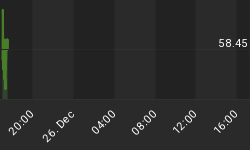The bad news is that 10 year US Treasury note traded off somewhat last week. The good news is that the stock market is up 3-4% since Hurricane Katrina hit the Louisiana shores. The sad news is that the main reason why the rescue effort for the victims of Katrina was less than satisfactory has not just been political fumbling on the part of various levels of government, but the fact that the US armed forces are so busy and stretched with their duties in far away places such as Iraq, Afghanistan, Kosovo, etc. that there is hardly anyone left to look after emergencies at home. The economic data released last week was sparse, but Money Supply as measured by M3 has exploded in the past 3 weeks - up over to $100 billion. It is a strange coincidence that the tab for Katrina stands around that figure. The Fed guessing game continues, from the hints I have heard thus far, I believe that they will raise rates another 25 basis points on September 20.
NOTEWORTHY: The economic data was mixed at best last week. The consumer is losing confidence, the ABC Weekly Consumer Confidence poll has sunk from -7 to -14 in the past 3 weeks. On the other hand, the ISM Non-Manufacturing Survey jumped close to 5 points to 65%, indicating that the service sector is just humming along. The action on the Canadian front was substantially busier. On Wednesday the Bank of Canada raised rates as expected to 2.75%. On Friday Canadian Employment Report came in stronger than expected at 27.5k jobs created. Housing Starts however disappointed in Canada declining close to 20% in August. The Canadian economy is a tale of 2 regions: the energy sector - which is screaming, and manufacturing, which is not. The upcoming week will see a busy economic release schedule leading up to the FOMC Meeting a week from Tuesday. Among the releases in the US we will get inflation data (PPI, CPI), international flow data (Trade Balance, Current Account Balance), confidence surveys (Empire Manufacturing, Philly Fed, University of Michigan), as well as Retail Sales and various other bits and pieces. The on-going themes of low core inflation numbers coupled with the hissing sound of the consumer losing steam should dominate the economic landscape going forward.
INFLUENCES: The latest Treasury market surveys are still predominantly bearish. The 'smart money' commercials have increased their long positions in the 10 year note futures from 89k to 158k this past week. This number is slightly positive for bonds. Seasonals are quite positive right through to the end of September. 4% is resistance for 10 year notes; this level has held for the time being. Look for support at 4.25%.
RATES: US Long Bond futures closed at 116-17, down a dollar and change this past week, while the yield on the US 10-year note increased 9 basis points to 4.12%. The Canada - US 10 year spread was unchanged at -30 basis points. The belly of the Canadian curve outperformed the wings by 2 basis points last week. Selling Canada 3.25% 12/2006 and Canada 5.75% 6/2033 to buy Canada 5.25% 6/2012 was at pick-up of 26 basis points. Assuming an unchanged curve, considering a 3-month time horizon, the total return (including roll-down) for the Canada bonds maturing in 2013 are the best value on the curve. In the long end, the Canada 8% bonds maturing on June 1, 2023 continue to be the cheapest issue on a relative basis. I have been an ongoing fan of curve flatteners as well as investing in the midterm maturity issues (a.k.a. the carry-in-the-belly) versus the long and short term maturity bonds. Both these trades have come a long way, and tend to overshoot a great deal. They have moved past their long term averages, but the trend seems to keep these dynamics in motion. While the yield curve flattening trade has been over-crowded for a while, the belly versus the wings trade is still far from popular. I am looking for these trends to stay in motion for the foreseeable future. After the slight setbacks 2 weeks ago, this past week these dynamics have turned back in our favour as short term rates rose faster then longer yields did.
CORPORATES: Canadian Corporate bond spreads were wider last week. Long TransCanada Pipeline bonds were out 1 bp to 117, while long Ontario bonds were unchanged at 46. A starter short in TRAPs was recommended at 102 in February 2004. Shorter maturity, quality corporates should be favoured over lower rated issues as I believe corporate spreads will continue to be under pressure. Any credit that is connected with the consumer and discretionary spending should be avoided. We advised to sell 10 year Canadian Bank sub-debt at a spread of 58 bps over the 10 year Canada bond a few weeks ago. This spread closed at 55 basis points on Friday - 1 wider on the week.
BOTTOM LINE: We are sticking with our recommendation to stay long the bond market. If you were long for this move, you might consider taking some profits around 4% on the 10 year yield, if you missed it, 4.25% is a good level to establish long positions. We would by no means recommend short positions in the longer end (10 year + maturities) at this juncture. The sell Canada 10 year bonds to buy US 10 year notes at 46 bps or better trade is still pending, we will not chase it at this point. An overweight position in the belly of the curve is still recommended for Canadian accounts. Short exposure for the corporate sector is advised.
















